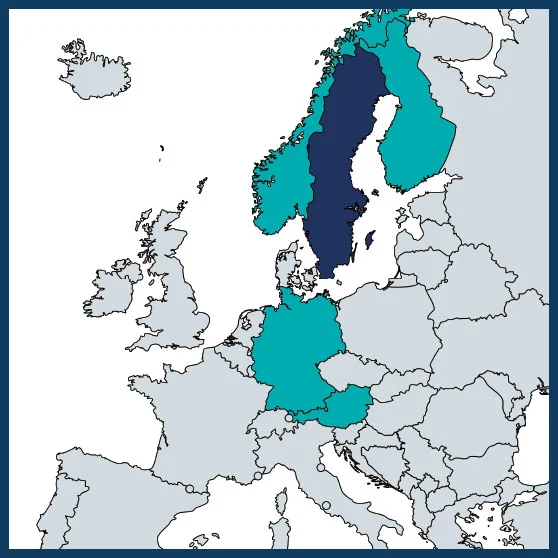11-2018 to 03-2022
€ 2,051,937
Tord Snäll
tord.snall@slu.se
Swedish University of Agricultural Sciences (SLU), Uppsala, SWEDEN
Swedish University of Agricultural Sciences (SLU), Alnarp, SWEDEN
University of Jyväskylä, FINLAND
Technische Universität München, Freising, GERMANY
Julius-Maximilians-Universität Würzburg, Rauhenebrach, GERMANY
International Institute for Applied Systems Analysis, Laxenburg, AUSTRIA
Norwegian University of Life Sciences, Aas, NORWAY

Wood production is a pivotal provisioning ecosystem service of major economic importance and a key component of the transition from a fossil- to a bio-based economy. However, intensive utilisation of forests also affects the viability of forest species and other ecosystem services, such as sustaining human wellbeing in the form of stress reduction or recovery. It is therefore needed to modify forest management to secure high yield of wood products, the stability of biological communities and the use of forest to promote public health.
The overall objective is to identify national forest management strategies that produce wood in a sustainable way while also promoting public health. The strategies will balance the global demand for wood, the profitability of forestry, the preservation of forest species communities, and promotion of human wellbeing. The project will estimate the future global demand for wood and the supply of wood in EU countries during the coming 100 years, using the scenarios in the UN Emissions Gap Report. Based on the estimated global demand for wood from the study countries, the project will identify landscape-level scenarios with profitable forestry, stable communities of forest beetles and enhanced human wellbeing. To identify these scenarios, the project will first further develop the global land-use model GLOBIOM, develop models for the structure of beetle communities and an index for human wellbeing reflecting stress reduction or recovery in relation with the diversity of different organism groups.
Core work include formulating and simulating scenarios for land-use, forestry and conservation, from the global to the landscape scale. The global scale simulations will account for factors such as consumer demand, production capacity, and competition between geographical regions and land use sectors. The landscape scale simulations will differ concerning forestry parameters, such as stand rotation length and tree species composition. They will also differ concerning strategies to promote conservation and human wellbeing. We will both compile available empirical data and collect new data in the field. These data will be used to build the models for beetle community structure and interactions between forest trees. We will also develop an index for human wellbeing for continental forest depending on forest conditions, based on the experiences from doing this in the Nordic countries. These models and indices will be used in the scenario simulations.
Two-way interactions with stakeholders will be implemented throughout the project. Initially, stakeholders will provide input on the scenario formulation. When the results from the scenario simulations are available, discussions with stakeholders on how to translate the findings into management guidelines will be carried out. Finally, the dissemination of the project’s results will be made in close link with key stakeholders representing the forest industry, NGOs and governmental officers.